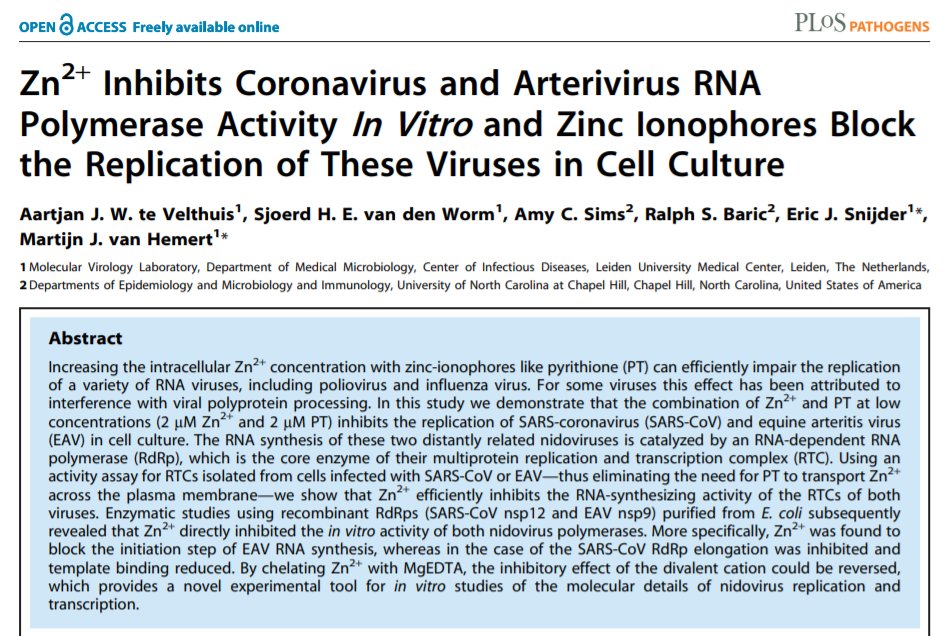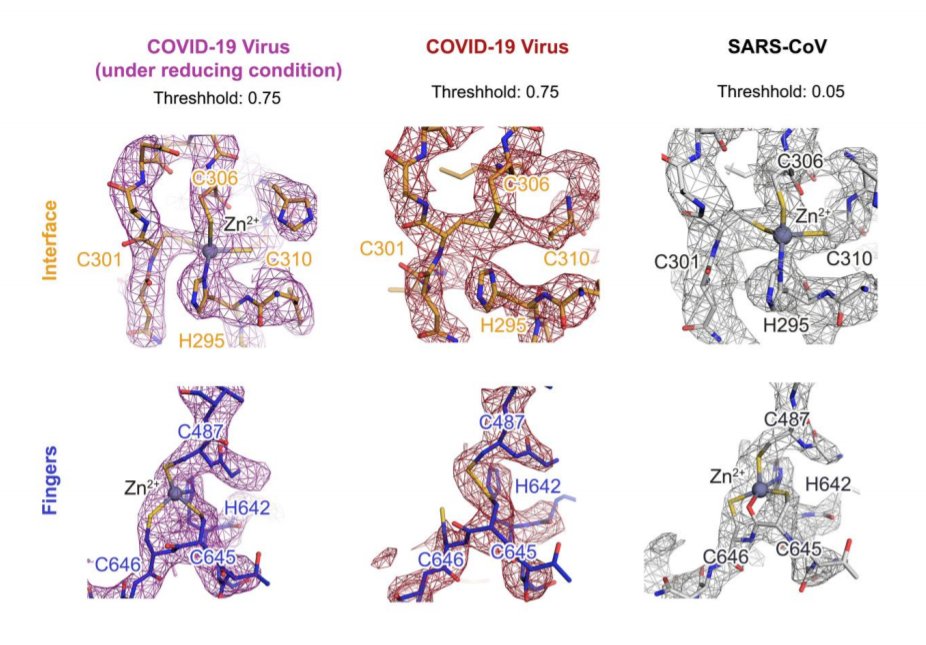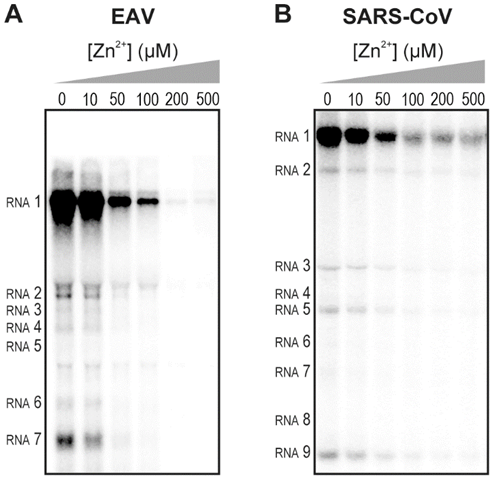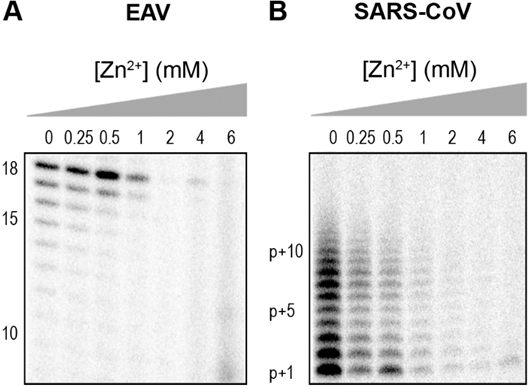Let’s talk about the zinc. This supplement has gone viral together with #hydroxychloroquine and #azithromycin hype, and has been promoted without scientific evidence.
thread https://abs.twimg.com/emoji/v2/... draggable="false" alt="🔻" title="Down-pointing red triangle" aria-label="Emoji: Down-pointing red triangle"> https://twitter.com/Ami_Magazine/status/1258326610719145989">https://twitter.com/Ami_Magaz...
https://abs.twimg.com/emoji/v2/... draggable="false" alt="🔻" title="Down-pointing red triangle" aria-label="Emoji: Down-pointing red triangle"> https://twitter.com/Ami_Magazine/status/1258326610719145989">https://twitter.com/Ami_Magaz...
thread
Most Zinc supporter refer to this article published on PLoS Pathogen in 2010, which described an in vitro inhibitory effect of Zn against SARS-CoV. Author also suggests the RdRp-dependent potential mechanism. Can this be translated to SARS-CoV-2? Let’s dive in.
The sequence & structural homology of RdRp between SARS-CoV and SARS-CoV-2 is high. Both have structured Zn ion, which looks like a cofactor critical for its activity. But the pharmacological perturbation with excessive Zn ion is largely unknown. https://science.sciencemag.org/content/early/2020/04/30/science.abc1560">https://science.sciencemag.org/content/e...
Can we translate the finding that Zinc can inhibit replication in SARS-CoV to SARS-CoV-2? I believe, with high confidence, Yes! Very likely Zn can also inhibit CoV2 RdRp in vitro.
However, dose is a more important consideration than in vitro efficacy in translational science.
However, dose is a more important consideration than in vitro efficacy in translational science.
PLoS paper -
In a CELL-FREE assay using isolated transcription complex, Zn starts to inhibit RNA replication at 50uM. To achieve the level that could eventually beneficial in patient (eg <5% activity), concentration must reach >200uM.
In a CELL-FREE assay using isolated transcription complex, Zn starts to inhibit RNA replication at 50uM. To achieve the level that could eventually beneficial in patient (eg <5% activity), concentration must reach >200uM.
Similar observation from CELL-FREE isolated RdRp inhibition assay -
Zn concentration must exceed >200uM to inhibit transcription. Note: these are cell free assays, so 200uM is the LOWEST dose that needs to be used in vivo, because Zn can’t penetrate cell membrane easily.
Zn concentration must exceed >200uM to inhibit transcription. Note: these are cell free assays, so 200uM is the LOWEST dose that needs to be used in vivo, because Zn can’t penetrate cell membrane easily.
What’s the cellular Zn concentration? There are two forms, free Zn and protein-binding Zn.
Total intracellular Zn conc is around 100-200uM. However, due to extremely high binding affinity from Zn-binding protein, free Zn is only in *pM* range. https://www.ncbi.nlm.nih.gov/pmc/articles/PMC5713255/">https://www.ncbi.nlm.nih.gov/pmc/artic...
Total intracellular Zn conc is around 100-200uM. However, due to extremely high binding affinity from Zn-binding protein, free Zn is only in *pM* range. https://www.ncbi.nlm.nih.gov/pmc/articles/PMC5713255/">https://www.ncbi.nlm.nih.gov/pmc/artic...
This highlights a very robust metal ion buffering in our cell:
Small perturbation will NOT change the free Zn significantly, because the Zn-binding proteins “absorb” 99.99% alien Zn. Similar buffer system also exists for other metal ions which may be toxic at high conc.
Small perturbation will NOT change the free Zn significantly, because the Zn-binding proteins “absorb” 99.99% alien Zn. Similar buffer system also exists for other metal ions which may be toxic at high conc.
So, is it possible to boost the intracellular free Zn from pM to uM level (x1,000,000) to stress SARS-CoV-2 replication?
Possible, when all the proteins in your cell are denatured - like a biochemical experiment. I don& #39;t believe that anyone wants to do this.
Possible, when all the proteins in your cell are denatured - like a biochemical experiment. I don& #39;t believe that anyone wants to do this.

 Read on Twitter
Read on Twitter





